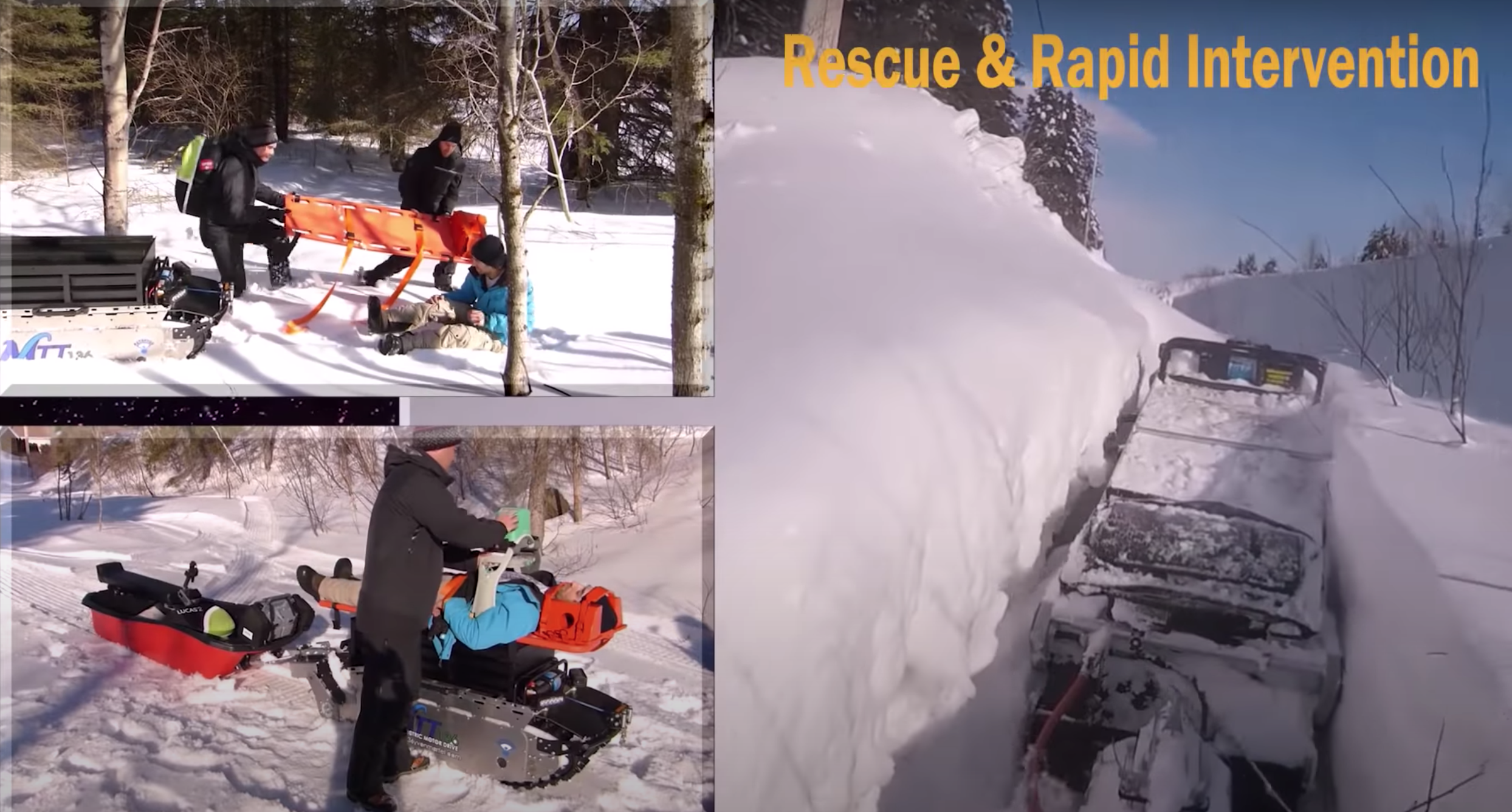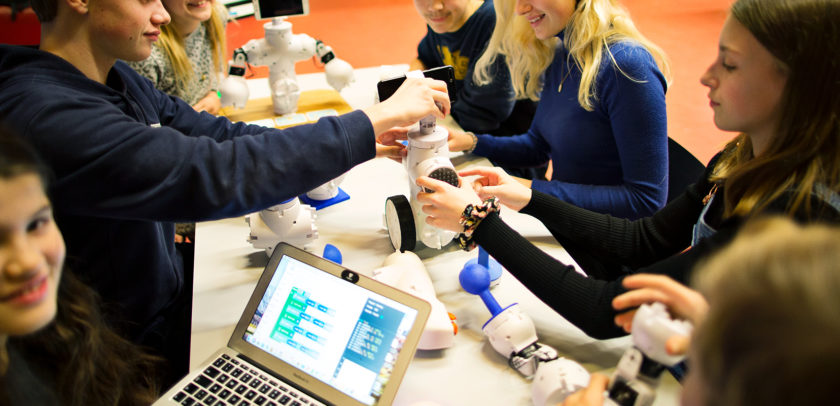My Track Technology (MTT) is an eco-friendly, electric remote-controlled track vehicle built to operate in extreme terrains. Its low center of gravity, resistance to the elements and autonomy make it a crucial new tool for a wide range of civilian and military applications including emergency and disaster rescues and agricultural functions.
Partnered with Shapeways, the makers of MTT were able to use 3D printing to cut substantial time and costs in their production process by rapidly prototyping designs and printing strong, end-use ready parts that can resist the elements.
We interviewed Michael Martel from MTT to find out how MTT has utilized Shapeways’ 3D printing technology to ramp up production with speed and efficiency.
What is your name and your role at My Track Technology?
My name is Michael
Martel and I’m in charge of the MTT product development.
How did My Track Technology start?
10 years ago my
father and I were discussing a product that can enhance human power but as
small as possible to be able to go where a person can walk. The main goal was
to be able to get someone that is injured out of deep forest and at the same
time bring reduced mobility
persons to extreme places.

What kinds of customers can MTT benefit?
Our customers are very broad. First, there is the military for rescue and material carrying. Mining for carrying material underground without any fumes and CO2 that has to be ventilated out of the mine. Wildfire suppression help, carrying water pumps and equipment. Also fat bike trails grooming, for agriculture use on wet fields or carrying a freezer in the field for fruits and vegetable harvesting. Replacing a generator on construction sites with MTT-154 onboard 2000W inverter, and much much more.

Photo source: My Track Technology
How did you find Shapeways?
Four years
ago one of my electronic employees bought a cheap FDM printer that he assembled himself. At that time I was very skeptical of 3D printing,
I was thinking it was only for toys and figurines. Nevertheless I let him try
some joystick parts. I was at the time building it with a laser cut aluminum
sheet, bent and welded to make an enclosed case. His part with FDM (PLA) was so successful that we
used it for our vehicle for about a year, very amazing. The problem with this
part was the surface finish, time to print and resistance to wet environments.
I was so impressed by this test that I decided
to learn more on 3D printing methods, suppliers and more. This is when I came
to Shapeways’ website and was very impressed
by the technical information and production
capabilities.
I then decided to
manufacture a couple of parts at Shapeways and I have
never been disappointed since. Shapeways is not the
least expensive but I tested many suppliers over the years and I did a lot of
cold temperature testing. Shapeways always has the strongest and nicer finished parts.
Unless you have $100,000 or more to invest in an SLS or HP printer you will never have the quality, robustness, precision and surface finish of a Shapeways part.
What are the benefits of using Shapeways over an in-office printer?
When buying a printer you have an amazing amount of choice offered to you. The problem is to have a printer for all of the applications. The size of the parts, the surface finish, the resistance and the productivity of this printer are all to be considered. Unless you have $100,000 or more to invest in an SLS or HP printer you will never have the quality, robustness, precision and surface finish of a Shapeways part. Shapeways is a one-stop shop for 3D printing projects. They have multiple machines to accommodate all the requirements of all special projects. So for us Shapeways has been a great partner to reach all of our goals, present and future.
What are the benefits of 3D printing with Shapeways over other manufacturing methods?
Speed, cost and simplicity. When our 3D drawing is finished we don’t have to produce fabrication drawings. We just upload the 3D file on Shapeways’ website. Very simple. We also do not have to build a mold for 1 up to 50 parts. It’s very great cost saving. Later when the design is perfect we can build a mold and be confident that the mold will meet our requirements. We are also not limited to a particular shape with 3D printing, practically every shape is possible. Finally, the precision, repeatability and tolerances are better than most of the others manufacturing methods.
“The precision, repeatability and tolerances [of 3D printing technology] are better than most of the others manufacturing methods
What aspect of My Track Technology production do you use 3D printing and Shapeways for?
We are right now
moving to production and most of the parts that had previously been tested with
3D printing are now thermo or injection molded. 3D printing saves us an amazing amount of money by testing
different designs quickly. When the design is
confirmed the mold can be built with the peace of mind that this part works perfectly well.
The other 10 parts
that are needed for an
MTT-154 2020 will continue to be built with 3D
printing technologies. Up to about 100 MTT-154 units per year it totally makes
sense to print parts in Nylon. We save the initial cost of the mold and we can design parts
that are impossible to manufacture with a traditional mold.
What materials do you use?
Right now we mostly use SLS, with Nylon PA12 (Versatile Plastic), dyed black. We also use rubber like TPU to create custom grommets.
How does working with Shapeways affect the speed of your manufacturing?
In our MTT machine there are about 20 plastic parts. Last year we were in a very big rush to do a test with the US military and we had no time to build 20 molds for every single part. We saved at least 6 months (concept, drawing for molding, mold building and parts production) by 3D printing with Shapeways.
How about any cost savings?
For 20 plastic parts the average cost of a mold is $3500 * 20 = 70,000 USD. This money would have been a very big gamble knowing that we were unsure if these parts would meet the functionality, design and resistance we needed. $70K is a lot of money for a startup. It’s manageable, but $70K without any guarantee that this mold will be useful in the future is unacceptable.
What is the most important aspect of working with Shapeways for you?
First, when we want
a strong part I know that Shapeways will not disappoint us. Also the website is
very easy to use, and I like the freedom to choose the shipping you want
depending on the requirement of a particular project. The quality control is
also excellent because I never return a part. Finally, the service when I need
information is excellent.
Can you share any current or future goals for My Track Technology?
The goal right now
is really to move to production and send machines to the customers that have
reserved these vehicles in the past. The product we sell right now is our
MTT-154 2020, with the possibilities to have only one unit with a trailer/sled
or with the flip of a switch multiple units coupled together for special military and industrial
applications.
Finally, we have orders for some small MTT-like robots. The frame will be built entirely in SLS printing at Shapeways very soon.
The next stage in 2021-2022 will be remote control with satellite or 4G and autonomous capabilities.
Efficient Manufacturing with 3D Printing
My Track Technology’s vast range of potential applications will see it become an essential tool for assisting humans in navigating challenging terrains and environments. Using 3D printing has made MTT’s production process much more efficient and affordable and shows how 3D printing can contribute to smarter manufacturing.
Find out how Shapeways can help with your rapid prototyping and robotics manufacturing needs.
The post How My Track Technology Uses 3D Printing for Their Remote All-Terrain Vehicle appeared first on Shapeways Blog.







